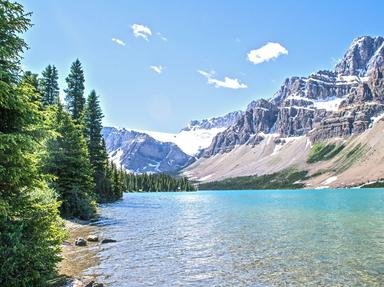Quiz Answer Key and Fun Facts
1. Vancouver Island, located off the western coast of mainland British Columbia, is home to both the city of Vancouver and the city of Victoria, the provincial capital.
2. The 22-hectare (55-acre) site that houses the spectacular Butchart Gardens was formerly a quarry of what?
3. When considering the three regions that make up the Pacific Rim National Park Reserve, on which coast of Vancouver Island can it be found?
4. The Kinsol Trestle spanning the Koksilah River on Vancouver Island was a bridge built for what sort of transportation?
5. Which of the following is *NOT* located on Vancouver Island?
6. Nanaimo, on Vancouver Island's east coast, is called the Harbour City. Thanks to the city's spoke-like layout, what was its previous nickname?
7. Which of these is the somewhat off-putting name for the area which contained the epicentre of the 1946 Vancouver Island earthquake?
8. Vancouver Island is home to a critically endangered rodent species. What is its name?
9. Without being a lame duck, the name of the highest mountain on Vancouver Island was adopted from a famous British sailing ship, which one?
10. Comox or K'ómoks is a First Nation group on Vancouver Island. Many geographic features are named after them. Which one is NOT one of them?
Source: Author
lg549
This quiz was reviewed by FunTrivia editor
agony before going online.
Any errors found in FunTrivia content are routinely corrected through our feedback system.
